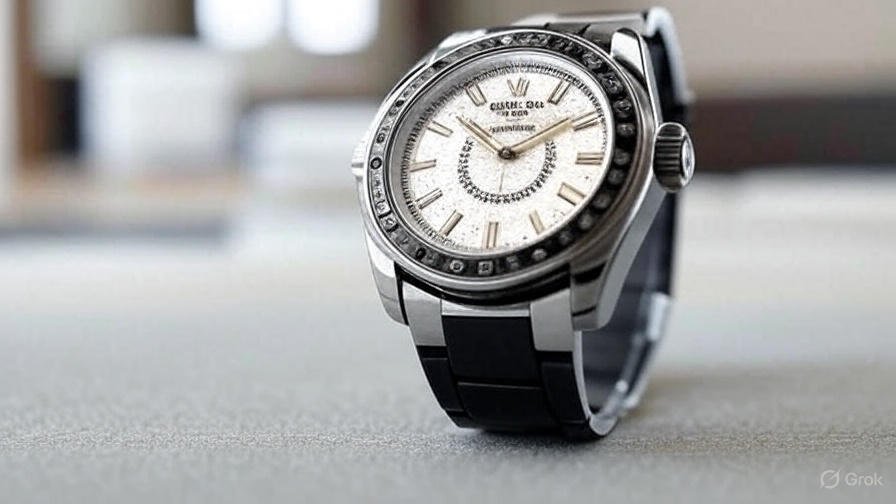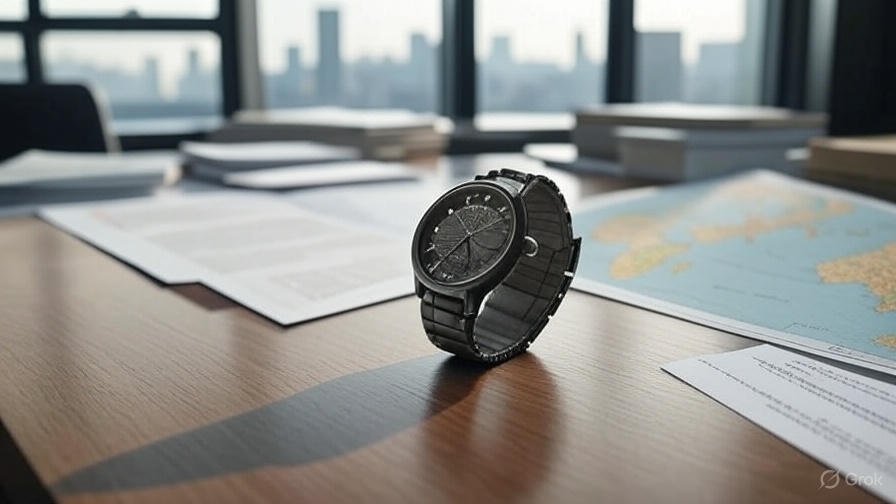In the world of luxury timepieces, few brands carry the prestige and heritage of Breitling. Known for its precision engineering and aviation-inspired designs, the Swiss watchmaker has long been a symbol of sophistication and craftsmanship. However, a growing concern in the luxury watch market has cast a shadow over the brand: the proliferation of Breitling Replica watches. These counterfeit timepieces, often sold at a fraction of the cost of authentic models, are raising alarm among collectors, retailers, and industry regulators alike.
The Rise of Counterfeit Timepieces
The luxury watch industry has seen a surge in counterfeit products in recent years, with Breitling replicas becoming increasingly prevalent. These fakes, which mimic the design and branding of genuine Breitling watches, are often produced with surprising attention to detail, making it difficult for the untrained eye to distinguish them from authentic pieces. According to a recent report by the Federation of the Swiss Watch Industry, counterfeit watches account for an estimated $1 billion in annual losses for the global luxury watch market.
The rise of online marketplaces and social media platforms has exacerbated the issue, providing counterfeiters with easy access to a global customer base. These platforms, while offering convenience for legitimate retailers, have also become breeding grounds for illicit sellers peddling Breitling Replica watches and other counterfeit luxury goods.
How Replicas Impact the Breitling Brand
For Breitling, a brand synonymous with quality and innovation, the influx of replicas poses significant challenges. Not only do counterfeit watches dilute the brand’s exclusivity, but they also erode consumer trust. Buyers who unknowingly purchase a fake Breitling may feel cheated, potentially tarnishing the brand’s reputation. Moreover, the presence of replicas in the market can depress the resale value of authentic Breitling watches, as collectors grow wary of purchasing pre-owned timepieces without thorough authentication.
“The proliferation of counterfeit watches is a serious issue for the entire luxury watch industry,” said Maria Steinmann, a spokesperson for Breitling. “We are committed to protecting our brand and our customers by working closely with authorities and retailers to combat this growing problem.”
Spotting a Breitling Replica
Distinguishing a genuine Breitling from a replica requires a keen eye and, in some cases, expert knowledge. While high-quality fakes may closely resemble authentic models, there are telltale signs that can help consumers avoid falling victim to fraud. For instance, genuine Breitling watches feature precise engravings, high-quality materials, and flawless movements. Replicas, on the other hand, often exhibit inconsistencies in logo placement, subpar finishing, or inaccuracies in the watch’s weight and feel.
Experts recommend purchasing Breitling watches only from authorized dealers or reputable retailers to ensure authenticity. Additionally, buyers should request documentation, such as certificates of authenticity and serial numbers, which can be verified with Breitling’s customer service team.
Industry Efforts to Combat Counterfeiting
The luxury watch industry is taking significant steps to address the counterfeit problem. Breitling, along with other Swiss watchmakers, has invested heavily in anti-counterfeiting technologies, such as micro-engravings, holographic markers, and blockchain-based authentication systems. These measures aim to make it harder for counterfeiters to replicate the intricate details of genuine timepieces.
Law enforcement agencies are also cracking down on the production and distribution of fake watches. In a recent operation, Interpol seized thousands of counterfeit luxury watches, including numerous Breitling replicas, in a raid targeting an international counterfeiting ring. Such efforts underscore the global scale of the issue and the determination of authorities to protect intellectual property in the luxury goods sector.
Consumer Awareness and Education
One of the most effective ways to combat the spread of Breitling replicas is through consumer education. Industry experts urge buyers to research thoroughly before making a purchase, particularly when shopping online. Websites that offer steep discounts or lack transparent seller information should be approached with caution, as they are often red flags for counterfeit goods.
Breitling has launched several initiatives to educate consumers about the dangers of replicas. The brand’s website features a dedicated section on spotting fakes, complete with visual guides and tips for verifying authenticity. Additionally, Breitling encourages customers to visit authorized dealers or contact the brand directly for assistance with authentication.
The Broader Implications for the Luxury Market
The issue of counterfeit watches extends beyond Breitling, affecting the entire luxury goods industry. From handbags to jewelry, counterfeiters are increasingly targeting high-end brands, capitalizing on their prestige to deceive consumers. This trend not only impacts manufacturers and retailers but also undermines the value of luxury goods as symbols of craftsmanship and exclusivity.
For collectors, the rise of replicas has made due diligence more critical than ever. Many are turning to professional appraisers and authentication services to verify the legitimacy of their purchases. Meanwhile, auction houses and secondary market platforms are implementing stricter protocols to ensure that only genuine timepieces are sold.
Looking Ahead: A Call for Vigilance
As the luxury watch market continues to grow, so too does the challenge of combating counterfeit goods. For Breitling, maintaining its reputation as a premier watchmaker requires a multifaceted approach that includes technological innovation, collaboration with law enforcement, and ongoing consumer education. While the battle against replicas is far from over, the brand remains optimistic about its ability to protect its legacy.
“We are confident that by working together with our partners and customers, we can reduce the impact of counterfeit watches,” Steinmann said. “Our goal is to ensure that every Breitling watch on a collector’s wrist is a genuine reflection of our craftsmanship and heritage.”
For consumers, the message is clear: when it comes to purchasing a Breitling watch, vigilance is key. By choosing reputable retailers and staying informed about the signs of a replica, buyers can protect themselves from fraud and continue to enjoy the timeless elegance of authentic Breitling timepieces.
Conclusion
The rise of Breitling replicas serves as a stark reminder of the challenges facing the luxury watch industry in an increasingly digital and globalized marketplace. While counterfeiters continue to exploit the prestige of brands like Breitling, the combined efforts of manufacturers, law enforcement, and informed consumers offer hope for curbing this illicit trade. By investing in advanced anti-counterfeiting technologies and fostering greater awareness, Breitling is taking proactive steps to safeguard its legacy. Ultimately, the fight against replicas is not just about protecting a brand—it’s about preserving the trust and admiration that collectors and enthusiasts place in the art of fine watchmaking. As the industry moves forward, collaboration and vigilance will remain essential in ensuring that the allure of a genuine Breitling timepiece endures.
More information please visit GIMKIT.



